The land of the wet and muddy – that’s what lot of folks call the salt marsh. If you have ever experienced walking through one you know why they call it that. Salt marshes are wetlands that are dominated by grasses and are partially flooded with salt water during high tide; some portions of the marsh are still flooded at low tide. The grasses that grow there are halophytes (salt tolerant). Their diversity is low, but abundance is high.
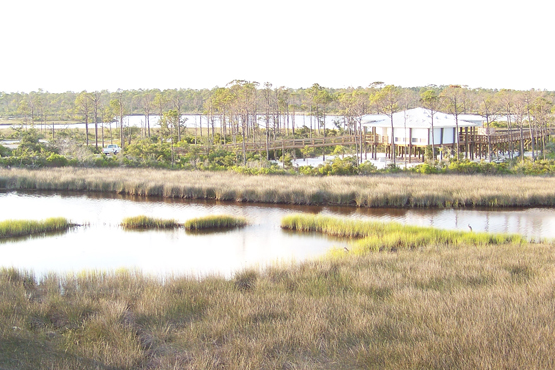
Photo: Molly O’Connor
Salt marshes grow on the protected side of the island – the bay side – and even there they do better in protective coves and inlets off of the main shoreline. They are not big fans of high wave energy. The grasses that live there are spaced in zones. Smooth cordgrass (Spartina) is more water and salt tolerant than black needlerush (Juncus) and is found along the marsh edge close to the shore of the bay itself. Black needlerush dominates the upper marsh closer to the maritime forest and tertiary dunes.
If you approach the marsh from the dune/forest side, you will encounter a dense field of needlerush. As you step into it you will experience soupy layers of black mud and detritus. Your feet sink and, if you do not have on secured shoes, you will lose them. You will get the odor of rotten eggs as you walk. This is hydrogen sulfide released by bacteria who are decomposing the leaf litter, and other organic matter, that is trapped and collected with the rising and falling tide. There is not a lot of wildlife in this area. The mud is deep, and the food sources are few. You will notice small white snails on the needlerush blades. These are marsh periwinkles. During high tide they move up the grass blades to avoid predators, at low tide they come down to feed on the organic material on the exposed mud.
Eventually you find small creeks heading towards the bay. Here the water is murky and the bottom still very muddy. Scattered amongst the needlerush are mounds of high dry ground covered in salt bush (Baccharis) where some animals can move around much better. Raccoons frequently these small “islands” seeking the numerous fish and shellfish that can be found in the creeks. Ribbed mussels can be found attached the base of the needlerush and are a particular favorite of the raccoons. Juvenile blue crabs can be found scavenging food sources in the creeks, juvenile mullet is common, as are small killifish and mollies. These can provide food for wading birds like the great blue heron who has widespread feet that resist sinking in the mud and allow them to hunt. Sometimes oysters and crown conchs are found in the creeks. Oysters do not move and cement to each other forming clumps. They filter feed in the water column collecting organic material and improving the water clarity – unless you walk through and sir up the mud and silt.
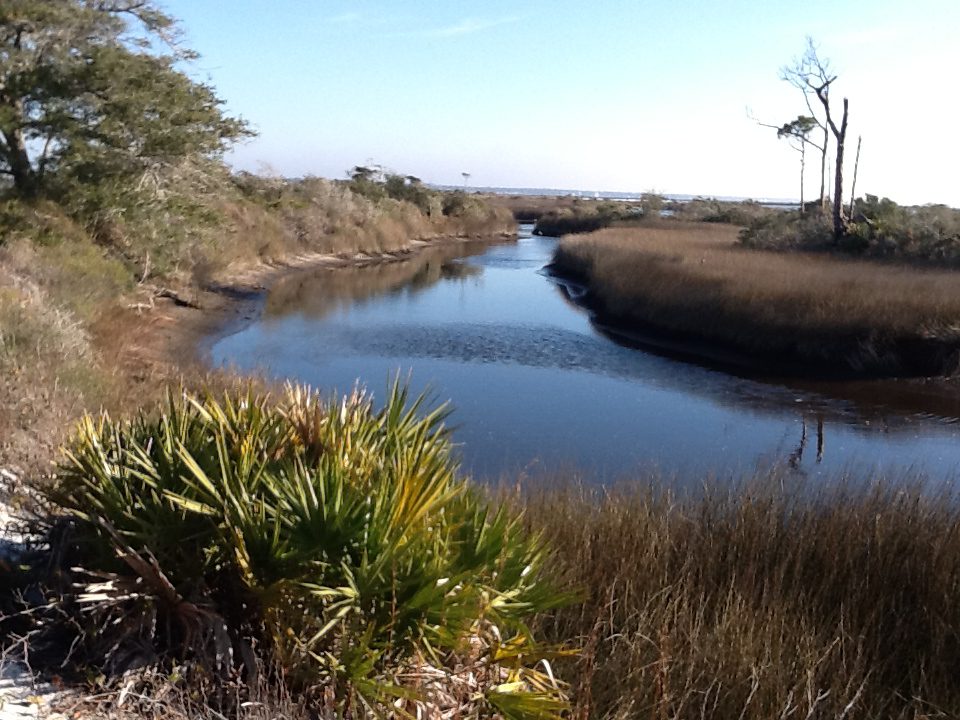
Photo: Rick O’Connor
These small creeks become wider and deeper as you approach the bay. In places the bottom becomes sandier, and all of this allows other species to forage. The above mentioned are still present. Oyster clumps become more numerous because they are not covered by the silt of the upper marsh. In the sandier areas flounder can be found feeding on the small fish and shrimp that reside here. This part of the marsh can be an important nursery for many open estuarine species. A variety of shrimp are found here, crabs, and juvenile fish as well. With more sand it is easier for herons to walk and hunt.

Photo: Molly O’Connor
There are also a few reptiles found here. The American alligator can be found at times, but are more common in the open lagoons. The Gulf salt marsh snake (Nerodia) resides here. They are nocturnal and rarely seen. But in the spring when breeding is going on, they can be encountered during daylight hours. These are none venomous snakes.
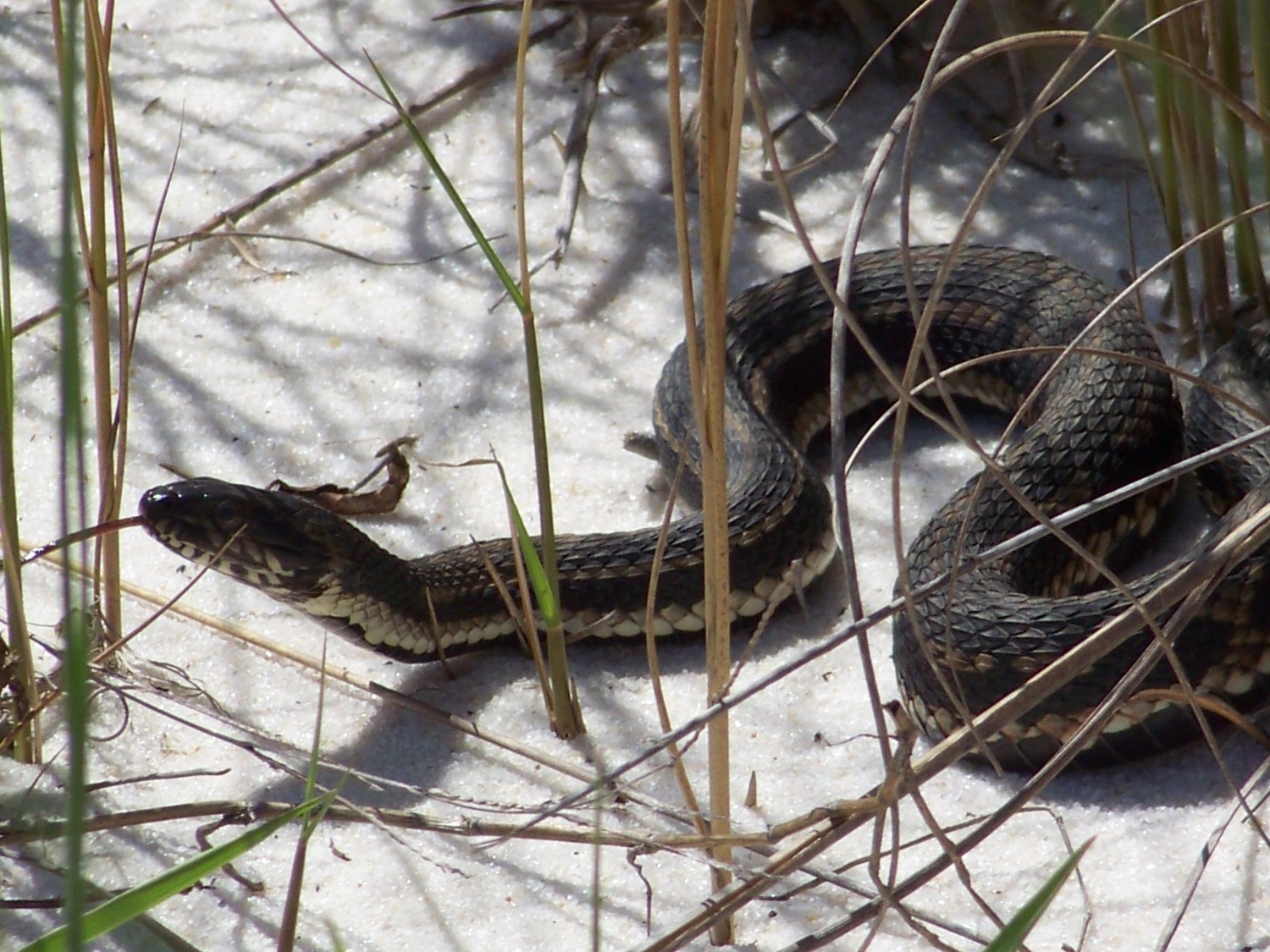
Photo: Molly O’Connor
Interestingly the venomous cottonmouth can be found here. This is an interesting story. The cottonmouth is associated with freshwater. It is not surprising, or uncommon, to find them near the freshwater ponds we have discussed already. By they do not have the lachrymal glands found in sea turtles and terrapins that allow them to swallow seawater, excrete the salt through glands in their eyes, and use this as a freshwater source. It appears that the cottonmouth needs freshwater for drinking. Despite this they are being encountered more often in more saline areas. One barrier island near Cedar Key, Seahorse Key, supports a large population of cottonmouths. It has been stated there may be more per square meter there than anywhere in Florida – and there is no source of freshwater. Researchers from the University of Florida have found they drink from pools of freshwater that form after heavy rains and are very opportunistic when it comes to selecting prey – including other cottonmouths. The species found on Seahorse Key is Agkistrodon conanti (Florida Cottonmouth). The eastern cottonmouth (A. piscivorous) is the one most common in and around our freshwater systems. It would be interesting to determine which species is living on our barrier islands, and how they use the landscape. Though I have never seen them swimming in the larger creeks of the marsh, I have seen them basking along its edges many times. I am sure they use this saline environment.
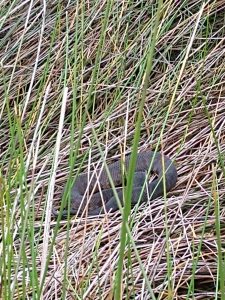
Photo: Jen Aicher
Another unique marsh reptile is the turtle known as the diamondback terrapin. This is the only resident estuarine turtle in the United States. They are related to the freshwater pond turtles’ people frequently see but prefer the more saline marshes of these islands. They feed primarily on shellfish and have a preference for the marsh periwinkle snails that climb the grass blades.
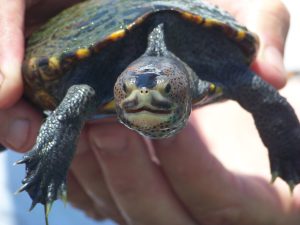
Photo: Molly O’Connor
River otters have been found swimming in these large creeks searching for food. They seem to like both fish and shellfish. Redfish can be found in the wider deeper creeks. The mullet and flounder found here are larger.
Hermit crabs are abundant here. These are crabs whose abdomens are not covered by shell. So, they must seek abandoned mollusk snails to “hide their rears”. They will select any shell but seem to prefer oyster drill and moon snail shells – possibly because they are more abundant. Oyster drills are snails who use their serrated tooth (a radula) for “drilling” into oyster and consuming them. Crown conchs and ribbed mussels are abundant here.
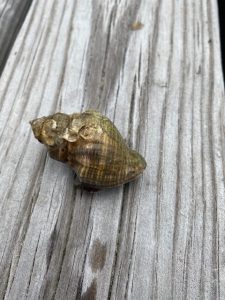
Photo: Rick O’Connor
These larger creeks sometimes feed directly into the bay, but sometimes they feed into a large open lagoon. These lagoons are full of fish. Mullet, redfish, flounder, stingrays, pinfish, and – if deep enough – even small sharks can be found here. Wading birds, like herons and egrets, and common along the shorelines and diving birds, like osprey and pelicans, are found here. The shoreline near the grasses still has small juvenile fish. The sandy beaches can support the hunting of raccoons and armadillo tracks are common. The alligator encounters I have had are more common here and we often see the heads of terrapins. The river otters I have seen here are usually along the edges.
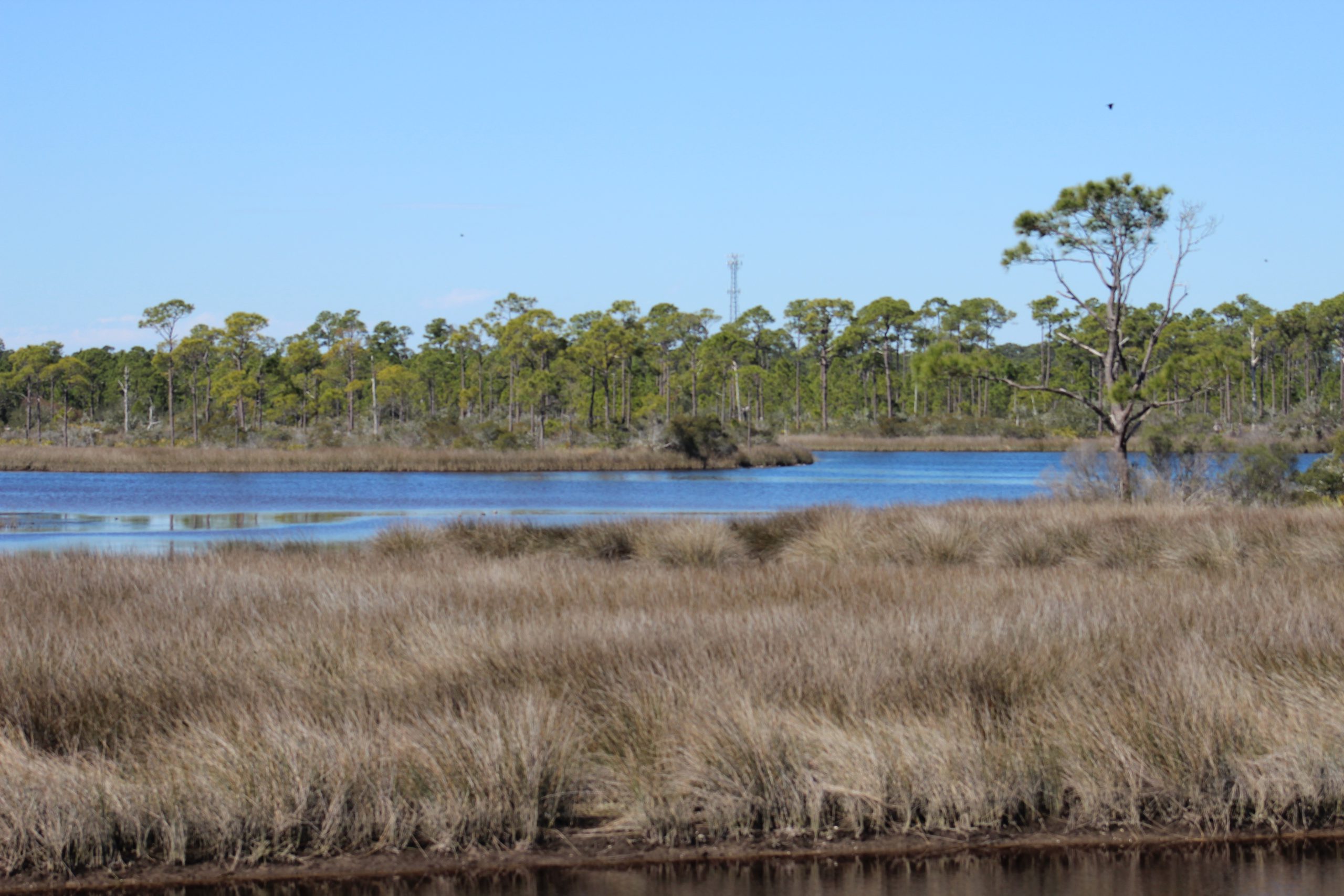
Photo: Rick O’Connor
Another unique marsh critter is the fiddler crab. Though found throughout the marsh, they seem to be more abundant where there is more sand. Related to the ghost crab of the Gulf side, these small crabs dig burrows down to the water table. When the tide is high, they plug their burrows with mud and sand, then wait. When low tide arrives, they emerge in the thousands to scavenge the shoreline for organic material in the sand – forming these round balls of sand as they are cleaning it that I call “coco-puffs”.
All large creeks and lagoons are connected to the open bays of the northern Gulf of Mexico where seagrass meadows form. As you walk the north shores of panhandle barrier islands you find sandy beaches often loosely covered by a variety of grasses. Walking inland you again return to either the tertiary dunes or maritime forest and may be another salt marsh. You have now experienced the primary habitats, and wildlife found within, on our barrier islands. But there are new concerns that could alter the ecology of these systems. One of those are invasive species. We will discuss this one in Part 8.
 0
0
